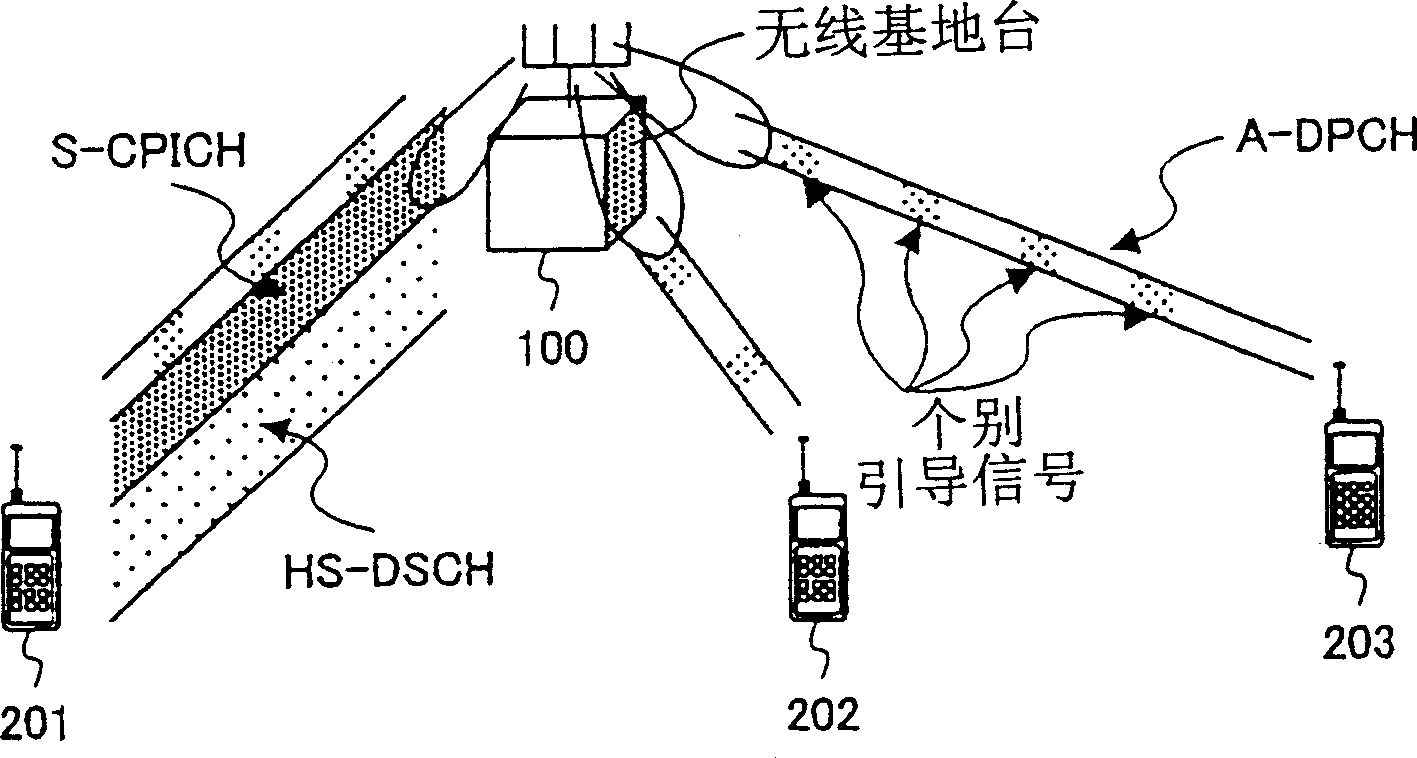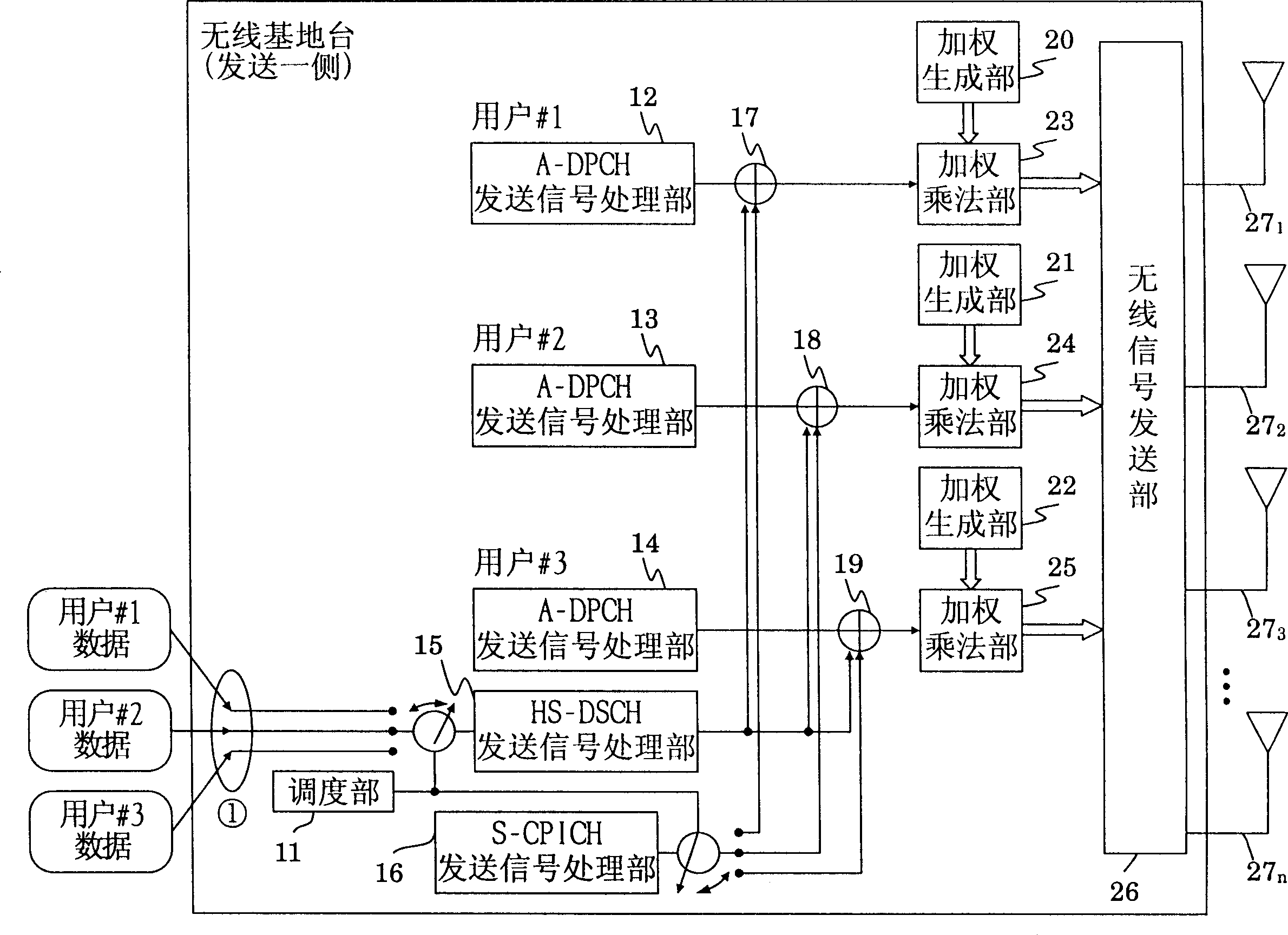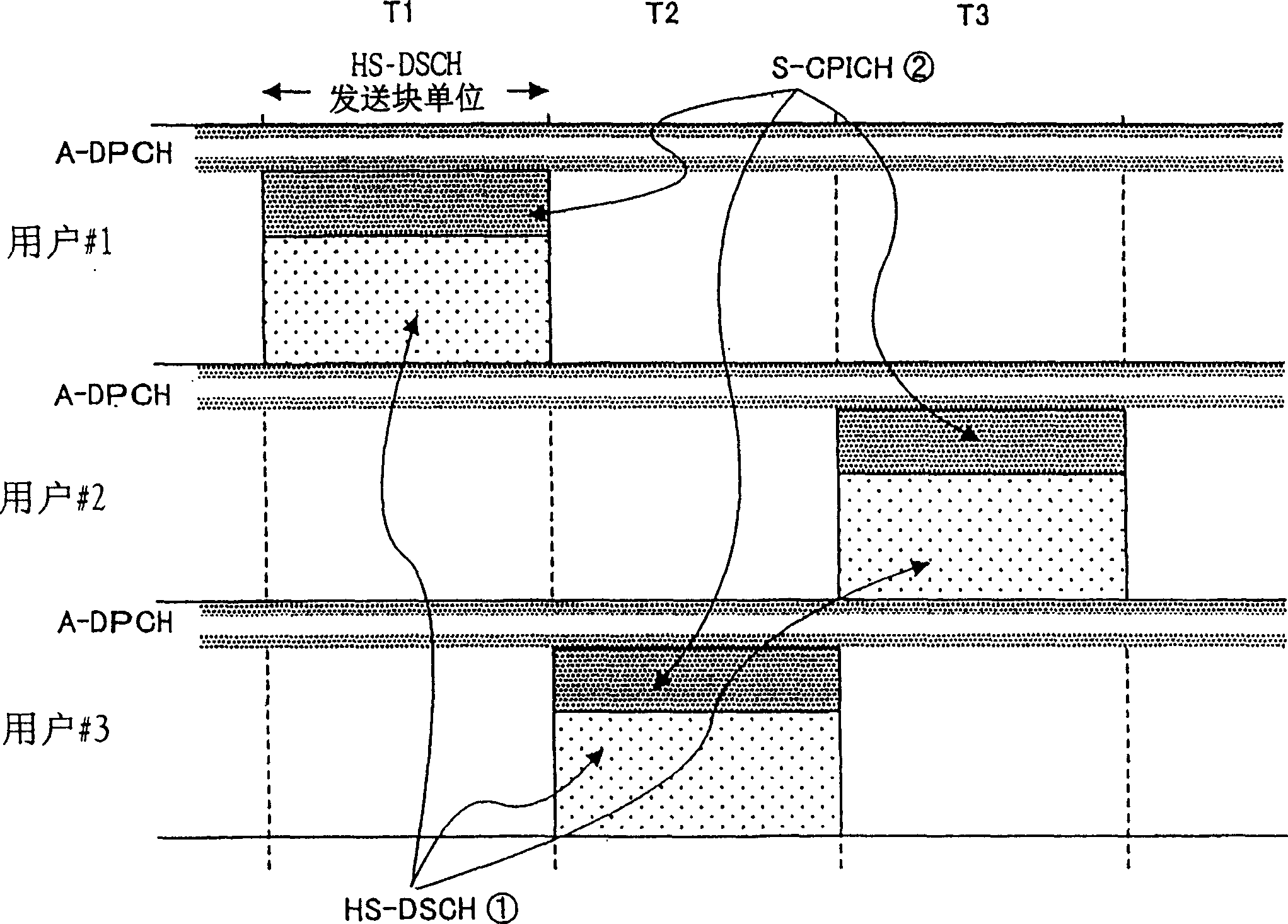Mobile communication system channel structure and its construction method and radio base station and mobile station
A mobile communication system and channel structure technology, applied in the field of wireless base stations and mobile stations, can solve problems such as system capacity reduction, deterioration of reception characteristics, and the inability of mobile stations to perform downlink quality detection.
- Summary
- Abstract
- Description
- Claims
- Application Information
AI Technical Summary
Problems solved by technology
Method used
Image
Examples
Embodiment 1
[0042] figure 2 show figure 1 The block structure of the transmitting side of the wireless base station 100 is shown. The wireless base station 100 according to the first embodiment of the present invention only sets the S-CPICH for the mobile station 201 to which the HS-DSCH has been assigned, as a pilot channel to transmit the channel signal.
[0043] figure 2 The transmission side of the wireless base station 100 shown includes: a scheduling unit 11, an A-DPCH transmission signal processing unit 12-14, an HS-DSCH transmission signal processing unit 15, an S-CPICH transmission signal processing unit 16, and an adder 17-19 , Weight generation unit 20-22, weight multiplication unit 23-25, wireless signal transmission unit 26, and transmission antenna unit 27 1 -27 n .
[0044] Next, the operation on the transmitting side of the radio base station 100 with the above-mentioned structure will be described.
[0045] figure 2 The rough cut head in represents the parallel input a...
Embodiment 2
[0054] The structure of the radio base station according to the second embodiment of the present invention is basically the same as that of the first embodiment. Figure 6 An example of the time transfer of the S-CPICH assigned by the radio base station according to the second embodiment of the present invention is given. In Embodiment 2 of the present invention, the S-CPICH is assigned during the time period when the mobile station performs downlink line quality detection every K transmission blocks. Of course, as in the first embodiment, the S-CPICH signal can be transmitted to the mobile station to which the HS-DSCH has been assigned.
[0055] As described above, according to Embodiment 2 of the present invention, since the S-CPICH is assigned only in the time period during which each mobile station performs downlink quality detection and the HS-DSCH transmission time period, it is possible to suppress code resources caused by the use of S-CPICH And insufficient power resources...
Embodiment 3
[0057] Figure 7 Shows a mobile station according to Embodiment 3 of the present invention (such as figure 1 The block structure on the receiving side of the mobile station 201). Figure 7 The receiving side of the mobile station shown includes: receiving antenna 51, wireless signal receiving unit 52, A-DPCH despreading unit 53, S-CPICH despreading unit 54, HS-DSCH despreading unit 55, channel estimation unit (A- DPCH) 56, channel estimation unit (S-CPICH) 57, A-DPCH synchronous detection unit 58, HS-DSCH synchronous detection unit 59, A-DPCH data processing unit 60, and HS-DSCH data processing unit 61.
[0058] The operation of the receiving side of the mobile station having the above structure will be described below.
[0059] Such as Figure 7 As shown, the wireless received signal received from the receiving antenna 51 is subjected to frequency conversion, waveform shaping, sampling, and quantization by the wireless signal receiving unit 52, and then is input to each of the i...
PUM
 Login to View More
Login to View More Abstract
Description
Claims
Application Information
 Login to View More
Login to View More - R&D
- Intellectual Property
- Life Sciences
- Materials
- Tech Scout
- Unparalleled Data Quality
- Higher Quality Content
- 60% Fewer Hallucinations
Browse by: Latest US Patents, China's latest patents, Technical Efficacy Thesaurus, Application Domain, Technology Topic, Popular Technical Reports.
© 2025 PatSnap. All rights reserved.Legal|Privacy policy|Modern Slavery Act Transparency Statement|Sitemap|About US| Contact US: help@patsnap.com



